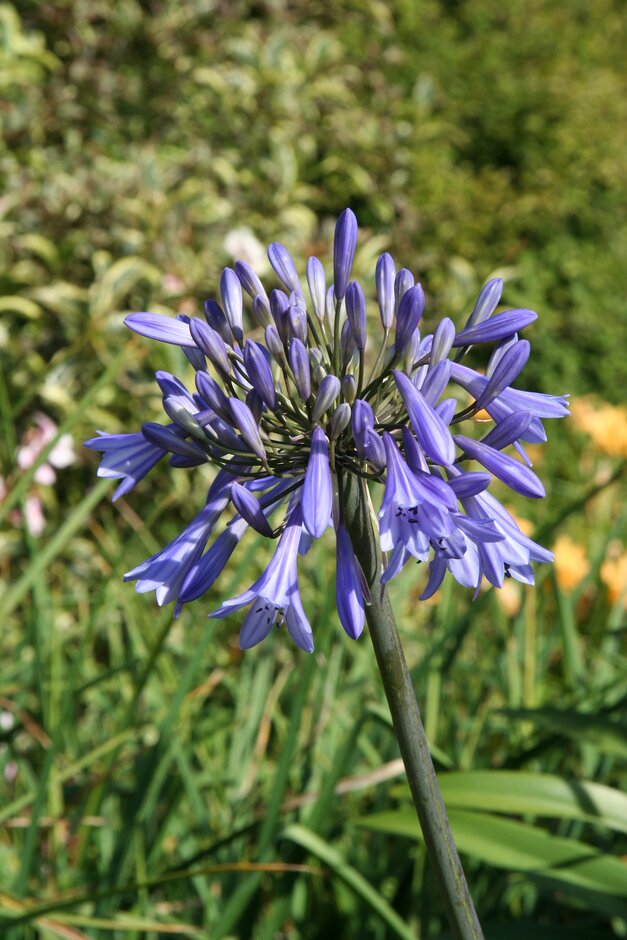Agapanthus inapertus subsp. hollandii
A slow-spreading, clump-forming perennial with narrow, strap-shaped, deciduous leaves and upright, slender stems to 1.8m tall bearing large clusters of narrowly tubular, mid to dark blue, nodding flowers each 3-5cm long
Size
Ultimate height
1.5–2.5 metresTime to ultimate height
2–5 yearsUltimate spread
0.1–0.5 metresGrowing conditions
Moisture
Moist but well–drainedpH
Acid, Alkaline, NeutralColour & scent
| Stem | Flower | Foliage | Fruit | |
| Spring | Green | |||
|---|---|---|---|---|
| Summer | Blue | Green | ||
| Autumn | Green | |||
| Winter |
Position
- Full sun
Aspect
South–facing or West–facing or East–facing
Exposure
Sheltered Hardiness
H4Botanical details
- Family
- Amaryllidaceae
- Native to GB / Ireland
- No
- Foliage
- Deciduous
- Habit
- Clump forming
- Potentially harmful
- Humans/Pets (dogs, cats): harmful if eaten. Wear gloves and other protective equipment when handling. For further information and contact numbers regarding pets, see the HTA guide to potentially harmful plants
- Genus
Agapanthus are clump-forming perennials with narrowly strap-shaped leaves, evergreen in some species, and erect stems bearing umbels of funnel-shaped blue or white flowers
- Name status
Correct
- Plant range
- South Africa
How to grow
Cultivation
Grow in moisture-retentive but well-drained soil in full sun, and in colder areas provide winter protection with a loose mulch; in containers, grow in peat-free, loam-based compost, water freely when in growth but sparingly in winter, and apply a balanced liquid fertilizer monthly from spring until flowering; for more advice, see Agapanthus cultivation
Propagation
Propagate by division between spring and early summer, or in early autumn after plants have finished flowering
Suggested planting locations and garden types
- Coastal
- Cottage and informal garden
- City and courtyard gardens
- Gravel garden
- Mediterranean climate plants
- Patio and container plants
- Low Maintenance
- Cut flowers
- Flower borders and beds
- Wall side borders
Pruning
No pruning required; leave seedheads for winter interest and cut back in late winter or early spring
Pests
May be susceptible to slugs and snails and agapanthus gall midge
Diseases
May be susceptible to a virus
Get involved
The Royal Horticultural Society is the UK’s leading gardening charity. We aim to enrich everyone’s life through plants, and make the UK a greener and more beautiful place.
